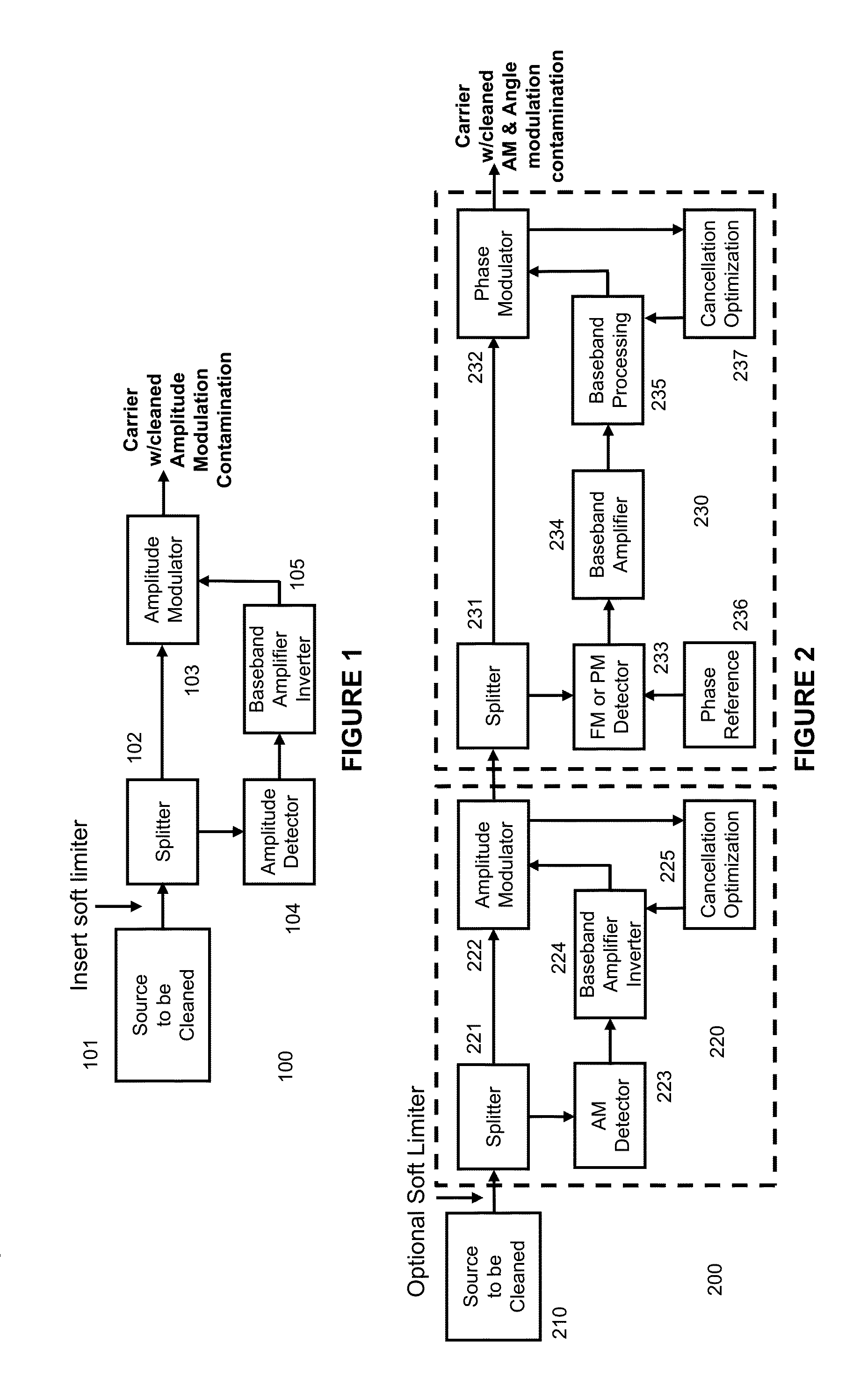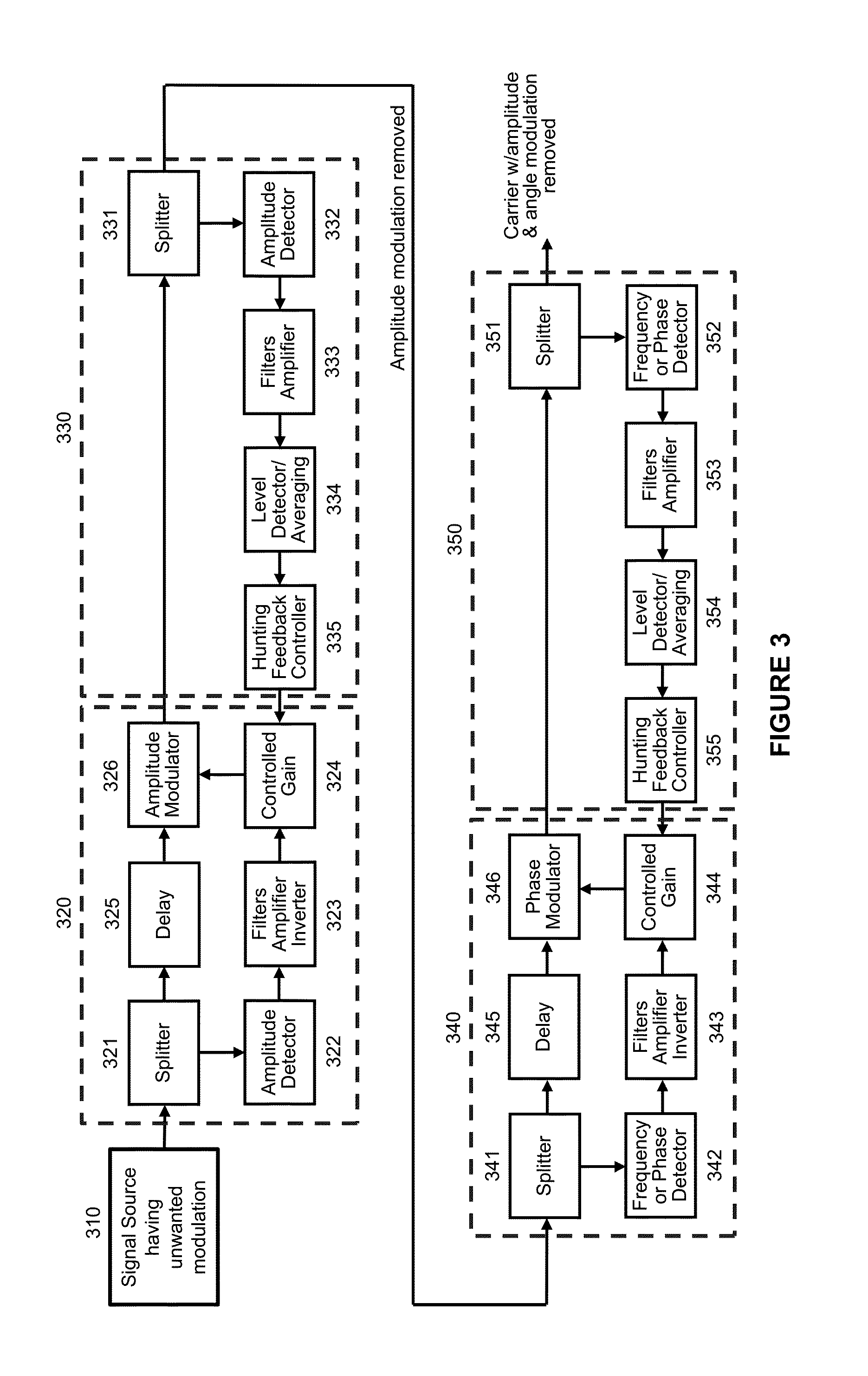Signal cancellation of amplitude/angle modulation noise using feedforward and feedback topologies
a topology and signal technology, applied in the direction of transmission, electrical equipment, etc., can solve the problems of affecting the efficiency and ability of spectral usage, the existence of unwanted amplitude noise, and adversely affecting other processes, such as frequency modulation and demodulation, and achieve the effect of less amplitude modulation nois
- Summary
- Abstract
- Description
- Claims
- Application Information
AI Technical Summary
Benefits of technology
Problems solved by technology
Method used
Image
Examples
Embodiment Construction
[0022]This Description and the Drawings constitute a Disclosure for signal cancellation of amplitude / angle modulation noise using feedforward and feedback topologies, including example embodiments that illustrate various technical features and advantages.
[0023]In brief overview, a method for cancellation of amplitude modulation noise using feedforward or feedback topologies. The method is adaptable to cancel amplitude modulation noise (contamination) of an input signal, including: receiving an input signal including an amplitude modulation noise signal; demodulating the amplitude modulation noise signal to generate a baseband amplitude modulation noise signal; signal processing the baseband amplitude modulation noise signal to generate a amplitude re-modulation signal; and re-modulating the input signal based on the amplitude re-modulation signal to generate an output signal, the output signal having less amplitude modulation noise than the input signal. In a feedforward embodiment,...
PUM
 Login to View More
Login to View More Abstract
Description
Claims
Application Information
 Login to View More
Login to View More - R&D
- Intellectual Property
- Life Sciences
- Materials
- Tech Scout
- Unparalleled Data Quality
- Higher Quality Content
- 60% Fewer Hallucinations
Browse by: Latest US Patents, China's latest patents, Technical Efficacy Thesaurus, Application Domain, Technology Topic, Popular Technical Reports.
© 2025 PatSnap. All rights reserved.Legal|Privacy policy|Modern Slavery Act Transparency Statement|Sitemap|About US| Contact US: help@patsnap.com



